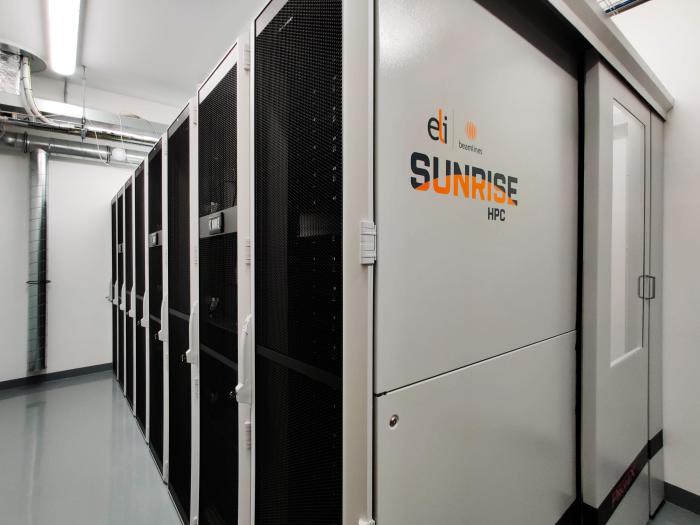Dr. Stefan Andreas Weber
Beáta Brezinová
We make artificial rainbows, halos, and circles about light; we represent also all manner of reflections, refractions, and multiplications of visual beams of objects.
Sir Francis Bacon, New Atlantis, 1626 (First description of the LASER!
MISSION OF THE DEPARTMENT
The department (89) of Plasma Physics and Ultra-High Intensity Interaction is interested in the interaction of high-power lasers with matter in the widest sense. The importance of laser-matter interaction on the nano-second-, picosecond-, and femtosecond-scale for fundamental and applied research can hardly be overestimated [1,2,3,4,5]. Dpt. 89 is operating the experimental hall E3 with the P3 infrastructure (Fig. 1). We provide a unique experimental facility to the user community based on multiple, synchronized laser beams for sophisticated pump-probe experiments. The P3 infrastructure is designed for high-energy, as well as high-intensity experiments.
References:
- Frontiers in high energy density physics the x-games of contemporary science, National Research Council oft he National Academies, Washington DC USA (2003)
- Basic Research Needs for High Energy Density Laboratory Physics, The U.S. Department of Energy Office of Science and National Nuclear Security Administration, Washington DC USA (2009)
- Plasma: at the frontier of scientific discovery, US Department of Energy, Office of Science, Washington DC (2016)
- Opportunities in Intense Ultrafast Lasers: Reaching for the Brightest Light, National Academies of Sciences, Washington DC USA (2017)
- Plasma Science: Enabling Technology, Sustainability, Security, and Exploration, National Academies of Sciences, Engineering, and Medicine, Washington DC USA (2020)
UBIQUITY OF PLASMAS
I. Langmuir ["Oscillations in Ionized Gases". Proceedings of the National Academy of Sciences. 14, 627 (1928)]: We shall use the name PLASMA to describe this region containing balanced charges of ions and electrons. (From Greek: πλάσμα 'moldable substance’).
99.999% of the visible matter in the universe is estimated to be in a plasma state, sometimes referred to as the fourth state of matter [1,2], in which an ionized substance made up of electrons and positive ions interacts via the self-generated electromagnetic fields. When high-power lasers interact with matter they almost instantaneously generate a plasma which is subject to many collective effects. Plasma physics is therefore the dominant physics branch of importance in our department and for the forthcoming user experiments in the experimental infrastructure. Plasma physics itself is a rather demanding topic as it comprises many aspects of ionized material, fluid dynamics, kinetic aspects, atomic physics and of course electrodynamics.
References:
1. D. A. Frank-Kamenetskii, Plasma: The Fourth State of Matter, Springer (1972)
2. S. Eliezer & Y. Eliezer, The fourth state of matter: an introduction to plasma science, IOP (2001)
THE P3 INFRASTRUCTURE
The Dpt. 89 operates the experimental hall E3 with its main experimental chamber P3 [1,2,3]. It is a dedicated facility for high-energy as well as high-intensity laser-plasma interaction due to multiple, synchronized laser beams for pump-probe experiments. The large size of the chamber, ~50 m3, makes it very user-friendly for setting up complex experiments. In addition a Betatron configuration is provided for generating hard X-rays and energetic electrons which can be used e.g. as backlighter for shock-experiments or in a stand-alone approach.
The details of the experimental hall and its chamber can be explored by oneself in a 3D street-view fashion: https://www.eli-beams.eu/facility/experimental-halls/e3-plasma-physics-platform/.
References:
- S. Weber et al., P3: an installation for high-energy density plasma physics and ultra-high intensity laser-matter interaction at ELI-Beamlines, Matter Radiat. Extremes 2, 149 (2017)
- N. Jourdain et al., The L4n laser beamline of the P3-installation: towards high-repetition rate high-energy density physics at ELI-Beamlines, Matter Radiat. Extremes 6, 015401 (2021)
- S. Borneis et al., Design, installation and commissioning of the ELI-Beamlines high-power, high repetition-rate HAPLS laser beam transport system to P3, High Power Laser Sci. Eng. 9, xxxxxx (2021)
ULTRA-HIGH INTENSITY INTERACTION
Laser-matter interaction is entering a new regime with the advent of multi-PW laser facilities. In the presence of such an intense strong laser field quantum electrodynamics (QED) effects, such as radiation friction, generation of high energy gamma photons, pair production and even cascade pair development come into play [1-3]. These extreme regimes are at play in the most extreme astrophysical environments: at the surface of neutron stars, where superconducting matter is threaded by magnetic fields much stronger than the Schwinger field. When the laser interacts with a dense matter there is a mutual interplay between the QED effects and the relativistic plasma physics processes. These include radiation pressure acceleration of plasma, generation of relativistic particles with energies in the hundreds of MeV-GeV ranges and the relativistic transparency of plasma due to the relativistic mass shift of particles. Such complex interaction involving multiple processes has to be studied using computationally intense kinetic numerical simulation. With their help, it is possible to predict and study the effects, which may occur in future experiments at high-power laser facilities and develop and validate the analytical models, which describe them.
Our analytical and numerical studies concentrate on:
- Pair production, gamma generation, cascade pair development and pair plasma [4,5]
- Radiation friction [6]
- Radiation pressure acceleration and relativistic induced transparency [7]
The outcome of our research is useful for:
- Novel sources of energetic particles and radiation
- Understanding and development of theory of some fundamental physics processes (QED)
- Development of theory of laser-matter interaction at ultrahigh laser intensities
- Predictive modeling of future experiments with multi-PW lasers
Dpt. 89 will receive the ELI-Beamlines 10 PW laser in the near future and the above-mentioned theory & simulation work helps to prepare the planned commissioning experiments.
References:
- A. Di Piazza, C. Muller, K. Hatsagortsyan, and C. H. Keitel, Extremely high-intensity laser interactions with fundamental quantum systems, Rev. Mod. Phys. 84, 1177 (2012).
- N. B. Narozhny and A. M. Fedotov, Extreme light physics, Contemp. Phys. 56, 249 (2015).
- A. R. Bell and J. G. Kirk, Possibility of prolific pair production with high-power lasers, Phys. Rev. Lett. 101, 200403 (2008).
- M. Jirka, O. Klimo, S. V. Bulanov, T. Z. Esirkepov, E. Gelfer, S. S. Bulanov, S. Weber, and G. Korn, Electron dynamics and e-e+ production by colliding laser pulses, Phys. Rev. E 93, 023207 (2016).
- E. G. Gelfer, A. A. Mironov, A. M. Fedotov, V. F. Bashmakov, E. N. Nerush, I. Y. Kostyukov, and N. B. Narozhny, Optimized multibeam configuration for observation of QED cascades, Phys. Rev. A 92, 022113 (2015).
- E. G. Gelfer, A. M. Fedotov and S. Weber, Theory and simulations of radiation friction induced enhancement of laser-driven longitudinal fields, Plasma Phys. Control. Fusion 60, 064005 (2018).
- E. G. Gelfer, A. M. Fedotov, O. Klimo, S. Weber, Absorption and opacity threshold for a thin foil in a strong circularly polarized laser field, Phys. Rev. E 101, 033204 (2020).
HIGH-ENERGY-DENSITY PHYSICS (HEDP)
High-energy density plasmas are generally characterized by pressures above 1 Mbar or energy densities above 1011J/m3 [1,2,3,4].Lasers are the only way to create such conditions in a controlled way in the laboratory on a small scale.HEDP is a discipline of importance to many branches of physics: planetary sciences, astrophysics, inertial confinement fusion (ICF), fundamental understanding of extreme states of matter etc. In this respect the new L4n beamline providing kilo-Joule, nanosecond laser pulses at a repetition rate of up to one shot per minute is expected to change the landscape of HEDP. This will considerably improve the quality of data of compressed material for equation-of-state, opacities, warm dense matter, shock-physics, radiative shocks, heat transport, strongly correlated systems, etc.
In the context of ICF issues such as non-local heat transport, how such transport is affected by magnetic field, laser-plasma interaction in the corona of shock-compressed material (backscattering processes) are still not really solved and there is ongoing work in this respect in the group.
References:
- V.E. Fortov, Extreme states of matter: High energy density physics, Springer (2016)
- S. Atzeni & J. Meyer-ter-Vehn, The physics of inertial fusion, Oxford (2004)
- P. Krehl, History of shock waves, implosions and impact, Springer (2009)
- R.P. Drake, High-energy-density physics, Springer (2006)
LABORATORY ASTROPHYSICS
K. Birkeland [The Norwegian Aurora Polaris Expedition 1902-1903, 1928]:
It seems to be a natural consequence of our points of view to assume that the whole of space is filled with electrons and flying electric ions of all kinds.
Laboratory astrophysics [1,2] is the study of astrophysical and cosmological phenomena on a laboratory scale using high-power lasers. The principle of limited similarity assures that the observed physics in the experiment is relevant for the corresponding phenomena on astrophysical scales [3].
Laboratory Astrophysics has becoming a very popular field among Laboratory Plasma physicists and Astrophysicists because of the importance of studying plasma under extreme conditions of temperature, density and magnetization similar to those found in high energy astrophysical sources, but also the study of matter under extreme conditions of irradiation, a powerful tool for astrochemistry and astrobiology Laboratory astrophysics also has a strong overlap with WDM and High Energy Density Physics (HEDP) as far as calculations such as radiative opacities and the equation of state (EOS) are concerned.
High-power facilities are already being used to study, for example:
- Magnetic reconnection
- Collisionless shocks
- Particle acceleration and cosmic-ray physic
- Coherent nonlinear structures (e.g., solitons)
- Magnetic field generation
- Jet formation
- Rayleigh-Taylor instability
- Radiation hydrodynamic physics (e.g. stellar atmospheres)
- Radiative shocks
- Astrochemical/Astrobiological consequences of irradiation
With the ultra-high power laser at ELI Beamlines new opportunities to explore QED processes and high-field astrophysics will emerge. Also, the study of collisionless shocks with a high-repetition ultra-high power laser will be crucial to understand how the most energetic particles in the Universe are accelerated. It will be also possible to study high energy electron positron pair plasma relevant to the extreme magnetospheres of neutron stars and black holes, and use the laser as a source of secondary, high energy particles for irradiation experiments.
References:
- S.V. Lebedev. High energy density laboratory astrophysics, Springer (2007)
- B. Remington et al., Experimental astrophysics with high power lasers and Z pinches, Rev. Mod. Phys. 78, 755 (2006)
- S.V. Bulanov et al., On the problems of relativistic laboratory astrophysics and fundamental physics with super powerful lasers, Plasma Phys. Rep. 41, 1 (2015)
MAGNETIZED LASER-PLASMA INTERACTION
Magnetic fields are ubiquitous in the universe, and their interaction with plasma drive numerous astrophysical phenomena such as jets in star formation regions, solar flares, and the interaction of the solar wind with earth’s magnetosphere. While the difference in the characteristic time and length scales between the two systems means that the astrophysical plasma may not be directly reproduced in the laboratory, comparison of relevant dimensionless parameters allows for a scaling between the two. Magnetized laser-plasma interaction experiments thereby allow for a detailed study of the fundamental mechanisms behind the astrophysical phenomena.
An in-depth understanding of the role played by the magnetic fields also provide vital insights into plasma processes relevant for various areas of fusion energy research, and thereby help improve the performance and neutron yield. The pulsed power system developed for P3 can be used to generate magnetic fields on the order of tens of tesla, which allows for a wide range of research areas to be explored in the laboratory [1,2,3], including magnetic reconnection, jet formation [5], collisionless shocks, and inertial confinement fusion [4].
References:
- D.D. Ryutov et al. Scaling astrophysical phenomena to high-energy-density laboratory experiments, Plasma Phys. Control. Fusion 44, B407 (2002).
- S.V. Lebedev. High energy density laboratory astrophysics, Springer Verlag (2007).
- B. Remington et al., Experimental astrophysics with high power lasers and Z pinches, Rev. Mod. Phys. 78, 755 (2006).
- P.Y. Chang et al. Fusion yield enhancement in magnetized laser-driven implosions, Phys. Rev. Lett. 107, 035006 (2011).
- H. Bohlin et al., Radiative characterization of supersonic jets and shocks in a laser-plasma experiment, Plasma Phys. Control. Fusion xx, (accepted for publication) (2021).
ATOMIC PHYSICS IN DENSE PLASMAS & X-RAY SPECTROSCOPY
Rapid development of high-intensity, high-energy optical lasers has provided new tools for the investigation of matter under extreme conditions of temperature, density, and fields that have never hitherto been achievable in the laboratory. This has resulted in a renewed interest in the study of high-density matter, e.g., strongly coupled plasmas, warm dense matter, and compressed matter above solid density, as well as in applications to inertial fusion science, astrophysics, and planetary science.
High-density matter has important links to atomic physics in dense plasmas as the plasma environment strongly perturbs atomic and ionic Coulomb fields and drives complex excitations. High resolution X-ray spectroscopy [1,2,3,4] is one of the most efficient diagnostic methods for studying matter under extreme conditions, for determination of system parameters and for exploration of various physical phenomena induced by high-intensity and high-energy lasers. The primary challenge of this research relates to exploration of the extreme conditions themselves and to the utilization of exotic radiative transitions for characterization of diverse phenomena, e.g., the generation and transport of suprathermal electrons, the effects of induced radiation fields, electromagnetic fields, and ultra-fast dynamics. These studies go far beyond the scope of standard diagnostic methods and require interlinking of the measured radiative properties with advanced atomic codes.
High-Z partially ionized atoms can also be used as a powerful diagnostic tool for ultra-high laser intensities [5].
References:
- O. Renner & F. Rosmej, Challenges of x-ray spectroscopy in investigations of matter under extreme conditions, Matter Radiat. Extremes 4, 024201 (2019)
- F. Rosmej et al., Plasma Atomic Physics, Springer (2020)
- M. Šmíd, O. Renner, A. Colaitis, V.T. Tikhonchuk, T. Schlegel, F.B. Rosmej, Characterization of suprathermal electrons inside a laser accelerated plasma via highly-resolved Kα-emission. Nature Commun. 10, 4212 (2019).
- O. Renner, M. Šmíd, D. Batani, L. Antonelli, Suprathermal electron production in laser-irradiated Cu targets characterized by combined methods of x-ray imaging and spectroscopy, Plasma Phys. Control. Fusion 58, 075007 (2016).
- M. Ciappina et al., Progress toward atomic diagnostics of ultrahigh laser intensities, Phys. Rev. A 99, 043405 (2019).
PLASMA OPTICS
The push for ever higher intensities requires ever larger optical components to manipulate coherent light due to the damage threshold of solid-state based optical materials. One possibility to overcome these limitations is to use a plasma which can sustain much higher fluences before non-linear collective effects set in. Plasmas can be used for a multitude of applications such as:
- Generation of short pulses by amplification using parametric processes [1,2,3,4,5]
- Focusing high-intensity laser pulses
- Generating plasma gratings to diffract pulses or change the spectrum [6]
- Plasmas can also act as wave-plates and polarizers
Experimental as well as theory/simulation work in this respect has been going for many years and encouraging proof-of-principle experiments were performed.
Plasma amplification is based on the controlled interaction of two transverse electromagnetic waves in a plasma- by using either Brillouin or Raman backscattering processes. The idea is to transfer the energy of a long pump pulse to a short sees-pulse and thereby increasing the intensity.
References:
- J.-R Marquès et al., Joule-Level High-Efficiency Energy Transfer to Subpicosecond Laser Pulses by a Plasma-Based Amplifier, Phys. Rev X 9, 021008 (2019).
- L. Lancia et al., Signatures of the Self-Similar Regime of Strongly Coupled Stimulated Brillouin Scattering for Efficient Short Laser Pulse Amplification, Phys. Rev. Lett. 116, 025001 (2016).
- L. Lancia et al., Experimental evidence of short light pulse amplification using strong-coupling stimulated Brillouin scattering in the pump depletion regime, Phys. Rev. Lett. 104, 025001 (2010).
- M. Chiaramello et al., Role of Frequency Chirp and Energy Flow Directionality in the Strong Coupling Regime of Brillouin-Based Plasma Amplification, Phys. Rev. Lett. 117, 235003 (2016).
- S. Weber et al., Amplification of Ultrashort Laser Pulses by Brillouin Backscattering in Plasmas, Phys. Rev. Lett. 111, 055004 (2013).
- H. Peng et al., Dynamical aspects of plasma gratings driven by a static ponderomotive potential, Plasma Phys. Control. Fusion 62, 115015 (2020).
COMPUTATIONAL PHYSICS
W. Saslaw [Gravitational Physics of Stellar and Galactic Systems, 1987]:
Out of computers
Endlessly flowing
Numbers come spinning
Their webs around science
Scientific computing gives crucial support to both, experimental and theoretical research. Simulation is essential in the design of experiments, the quantification of experimental uncertainties and in the analysis and visualization of data. Scientific computing also supports theoretical work because the study of complex behavior in physical systems is frequently intractable by traditional analytical methods. In contrast, controlled "in-silico experiments" can be used to explore the validity of theoretical models under fully controllable conditions. It is now common to hear that modern science rests on the three pillars of theory, experiment and numerical simulation [1,2,3].
At ELI Beamlines, the most common simulations involve the interaction of light with matter, problems of radiation propagation, and other multi-physics problems. The phenomena that arise from these cases lead to computational problems of considerable size that may take an exceedingly long time to simulate. Hence, ELI Beamlines has invested in High-Performance Computing (HPC) infrastructure, composed of hundreds of computers linked together with fast networks. These computers can then be used in a coordinated manner to tackle a specific problem. Deployed as a shared resource, the HPC clusters, as they are called, give our scientists access to significant computational power where they can develop and run specialized software. The local access to such resources diminishes the barriers for use of such technology, which usually requires burdensome application processes in major computing centers. At the same time, our scientists with needs that exceed our current resources indeed pursue the grants and applications in these computing centers when necessary, but now armed with the confidence developed by the experience with our local machines.
The deployment of local HPC resources at ELI Beamlines is consistent with European Strategies to disseminate education about and use of HPC systems, and puts our scientists in a position to employ the future HPC systems that are now in the horizon [4,5,6].
References:
- S. Jardin, Computational methods in plasma physics, CRC Press (2010)
- T. Tajima, Computational Plasma Physics: With Applications To Fusion And Astrophysics, Westview Press (2004)
- J. Hsu, Visual and Computational Plasma Physics, World Scientific (2014)
- PRACE Steering Committee. PRACE - The Scientific Case for HPC in Europe.(https://prace-ri.eu/about/scientific-case/)
- https://ec.europa.eu/programmes/horizon2020/en/high-performance-computing-hpc
- https://eurohpc-ju.europa.eu/documents
THE TEAM (as of 15.2.2021)
A. Araudo, B. Brezinova, H. Bohlin, E. Chacon-Golcher, M. Ciappina, F. Condamine, E. Gelfer, A. Gintrand, N. Globus, N. Jourdain, D. Kecova, O. Klimo, T. Lastovicka, C. Lu, Q. Moreno, A. Müller, J. Nikl (PhD), O. Renner, S. Shekhanov (PhD), V.T. Tikhonchuk, S. Weber
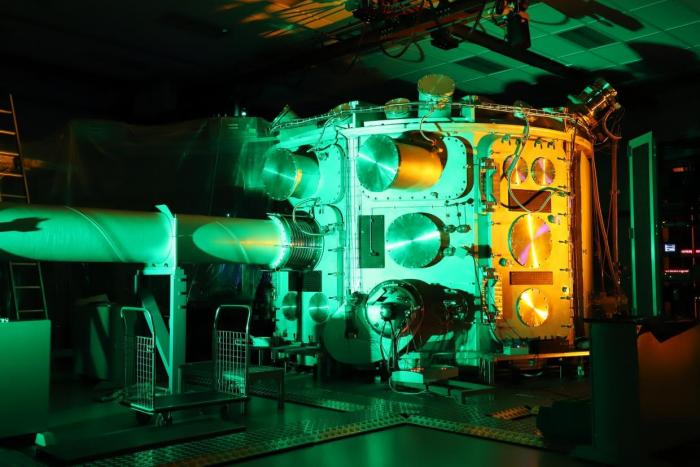

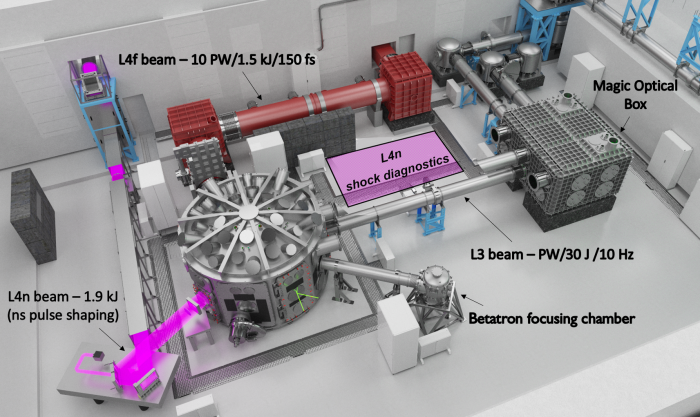

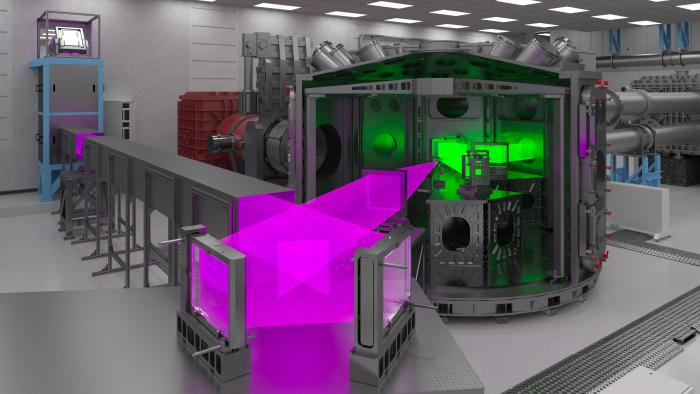
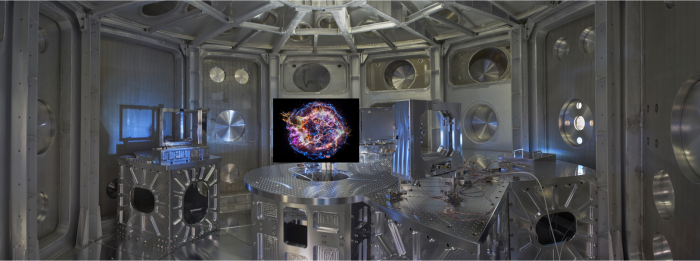
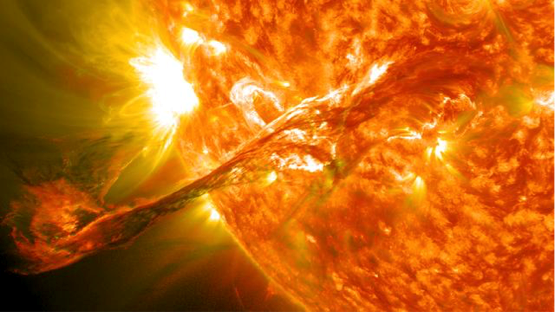
![Figure 8: Spatially resolved X-ray spectrum obtained at the laser-irradiated double-foil Al/C target demonstrates formation of the plasma jet at the Al foil and its propagation towards the secondary C target. The spectrum visualizes the deceleration, trapping, and subsequent dissipation of Al ions at the solid C surface and contributes to interpretation of charge exchange phenomena accompanying the plasma-wall interaction. (Fig. 16 from Ref. [1]) Figure 8: Spatially resolved X-ray spectrum obtained at the laser-irradiated double-foil Al/C target demonstrates formation of the plasma jet at the Al foil and its propagation towards the secondary C target. The spectrum visualizes the deceleration, trapping, and subsequent dissipation of Al ions at the solid C surface and contributes to interpretation of charge exchange phenomena accompanying the plasma-wall interaction. (Fig. 16 from Ref. [1])](https://webarchiv.lib.cas.cz:443/wayback/20220902205252im_/https://www.fzu.cz/sites/default/files/styles/media_embed_700/public/2021-02/10.png?itok=6fK62wMR)
![Figure 9: Diagram showing the combination of compression, amplification and focusing techniques for a high-energy scenario (Fig. 4 from [5]). Figure 9: Diagram showing the combination of compression, amplification and focusing techniques for a high-energy scenario (Fig. 4 from [5]).](https://webarchiv.lib.cas.cz:443/wayback/20220902205252im_/https://www.fzu.cz/sites/default/files/styles/media_embed_700/public/2021-02/11.png?itok=EM8zx1iX)
